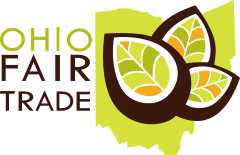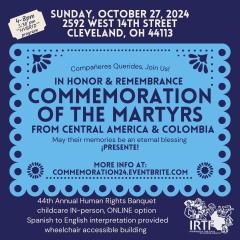excerpt from a Feb 28, 2019 guest post to NICANOTES by John Perry.
Senator Patrick Leahy stated that the Nicaraguan government is not “meeting basic requirements that benefit the Nicaraguan people,” a statement that just does not conform to independent reports of social and economic progress. These advances since 2007 when Ortega returned to the presidency include:
• Being the first country to meet the UN Millennial Development Goals for tackling malnutrition, for which it was praised by the UN.
• Halving levels of poverty and extreme poverty. Between 2009 and 2014, the general poverty rate fell from 42.5% to 29.6% and has since fallen further.
• Being declared a country that is ‘illiteracy free’ by UNESCO.
• Achieving progress on the UN Human Development Index so that it now ranks above Honduras and Guatemala and has a longer life expectancy than either of these countries or El Salvador. Its gender development index is higher than Mexico’s – a far wealthier country.
• Rebuilding many hospitals and ensuring all cities and neighborhoods have access to free health services, including 24-hour health centres as well as public hospitals in many areas.
• Having water and sanitation plans that have substantially increased coverage, leading to the achievement of the corresponding Millennium Development Goals.
• Becoming one of the safest countries in the hemisphere, because of its low levels of violent crime.
• Addressing issues of energy shortages and over dependence on fossil fuels – having inherited a situation in which over 80% of electricity was generated from bunker fuel, the Ortega government has turned Nicaragua into what the World Bank calls “a renewable energy paradise”, reaching 54% of generation from renewables in 2017 and having a goal to reach 90% by 2020. It has also extended electricity coverage from only half the population in 1990 to 94% at the start of 2018.
One outcome of these huge achievements is that – in contrast to the ‘northern triangle’ countries of Honduras, Guatemala and El Salvador – Nicaragua produces only a very small proportion of the thousands of undocumented migrants who travel north to Mexico and the US.
Use of International Loans
Nicaragua has access to finance from a number of international institutions which could be ended if the NICA Act were approved and then enforced. The principal institutions are the World Bank and its associated institutions, the IMF, and the Inter-American Development Bank. All three of these have expressed recent satisfaction with the ways in which Nicaragua has spent the finance provided – there have been no allegations of corruption or misuse of funds by these bodies. The IMF has also expressed its concern about the effect on Nicaragua of the NICA Act, if implemented.
Here are examples of how projects benefitting ordinary Nicaraguans would suffer if the NICA Act were enforced and these loans were stopped, and the current attitudes of the World Bank and IDB towards the government of Nicaragua.
World Bank (and International Development Association)
A current, multi-faceted World Bank project improves access to health services and water supply and strengthens land rights. Here are some results reported by the Bank:
• Through “casas maternas,” or maternity waiting homes, maternal and infant health has improved: from 2012 to 2015, the percentage of pregnant women receiving four prenatal controls increased from 50 to 73; institutional deliveries increased from 72 percent to 87 percent; and the percentage of children immunized with the Pentavalent vaccine increased from 88 to 98 in targeted municipal health networks.
• Land rights have been strengthened, benefitting 15 of Nicaragua’s 21 indigenous territories in the historically marginalized Atlantic regions. From 2005 to 2013, through the Land Administration Project (PRODEP), over 104,000 people from 214 communities in five major ethnic groups benefited; 18 percent of the national territory was registered and titled with support of the project.
• From 2009 to 2015, over 168,000 beneficiaries of the Greater Managua Water and Sanitation (PRASMA) Project gained access to reliable water supply and more than 62,000 gained access to sanitation services. In rural areas, from 2008 to 2015, more than 68,000 beneficiaries from the Rural Water Supply and Sanitation Project (PRASNICA) gained access to water supply and sanitation services.
The World Bank has commented on the “efficient division of labor among key development partners” and “the satisfactory pace of implementation” of its projects in Nicaragua. It has praised Nicaragua’s “disciplined macroeconomic policies” enabling it “to shift from crisis control mode to longer-term, pioneering strategies to fight poverty, particularly in remote rural communities.”
Inter-American Development Bank
The IDB currently has over $1 billion of development loans with Nicaragua, including:
• A $133 million loan to improve healthcare in Nicaragua’s ‘Dry Corridor’ (the departments of Nueva Segovia, Madriz, Esteli, Matagalpa and Jinotega). It will fund construction, certification and equipment of hospitals, health centers, health posts and maternity waiting homes as well as actions to improve service quality and train Health Ministry staff members.
• A project supported by the Gates Foundation, aimed at ending malaria in Central America.
• A recently approved $72 million loan to improve access to potable water and basic sanitation in 11 cities in various departments and in the capital, Managua.
The IDB, in a 2015 report, analysed Latin American countries’ institutional capabilities to implement effective, efficient, and transparent public administration. It reported that the governments with the lowest scores on the MfDR in 2007, which included Nicaragua, had taken “significant steps to improve their national public administration systems.” Together with Nicaragua, there were eight other countries achieving “substantial progress” whereas in 15 others progress was only “fair.”
----------------------------------
John Perry lives and works in Masaya, Nicaragua, is a member of the UK Nicaragua Solidarity Campaign and blogs at http://twoworlds.me/


